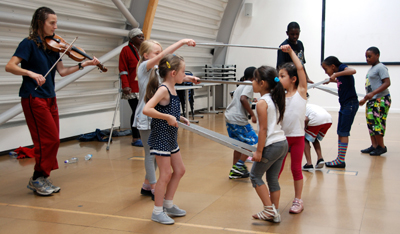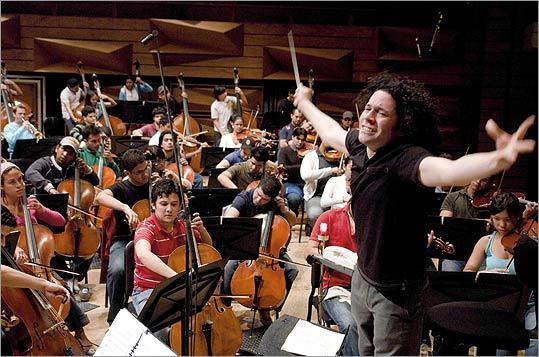Over a year ago, I wrote a blog post about the importance of funding arts education. I'm still thinking about these issues, so here is Part Two: Save the arts because the arts save lives...
The arts – dance, theater, music, writing and the visual arts – have a powerful impact on children, opening the door to deeper knowledge and self-expression. I know from personal experience, and I have seen it in young people far and wide. While the current administration has said all the right things about arts education, this is sadly not enough, because federal, state and local policies STILL favor standardized testing and severely limit arts education funding. With all the concern about remaining competitive in a global market, this is precisely the time to fund arts education and allow our children to thrive.
While it is hard to “make a living” as an artist, I tried my best, working as a dance therapist in a psychiatric hospital and later, teaching dance as a resident artist in the Syracuse, New York public school system. I discovered the magic of movement as a source of expression for young children. Often in these schools, children were marched into the gym in single file, and told to remain quiet and respectful of the visiting teacher.
 Little did they know that the new visitor was about to tell the children to jump up and down like popcorn, express their joy and anger through finger dances, and shout as loud as they could, using only their eyes or feet. There was always one child in every school who attached her- or himself to me, following me around, sometimes sitting on my lap or holding my hand as I moved through the room. Sometimes I imagined that what this child really wanted was to crawl into my womb for safety. And there was always the wild child. Sometimes teachers warned me about him or her, and other times, I learned through my own encounters. If teachers were observing – they rarely participated – they might speak with the child in a stern, warning tone or pull the child away for time out. But when I could, I intervened and said ‘no, it’s okay’, because I could usually figure out a way that that child could use movement to express herself.
Little did they know that the new visitor was about to tell the children to jump up and down like popcorn, express their joy and anger through finger dances, and shout as loud as they could, using only their eyes or feet. There was always one child in every school who attached her- or himself to me, following me around, sometimes sitting on my lap or holding my hand as I moved through the room. Sometimes I imagined that what this child really wanted was to crawl into my womb for safety. And there was always the wild child. Sometimes teachers warned me about him or her, and other times, I learned through my own encounters. If teachers were observing – they rarely participated – they might speak with the child in a stern, warning tone or pull the child away for time out. But when I could, I intervened and said ‘no, it’s okay’, because I could usually figure out a way that that child could use movement to express herself. Dance is a healer, a universal mode of communication that is good for children. It’s natural. It’s great exercise. It wakes up the brain. It gives children an outlet. I have observed talented movement professionals use movement with children to help them learn science and math concepts. Dance can strengthen children’s emotional intelligence, and their ability to collaborate with others. And it can provide a form of discipline and order, when students are challenged to create dances that have beginnings, middles and ends.
A number of studies (see Critical Links) cite a positive correlation between dance experiences and nonverbal reasoning skills. One study demonstrated that “subjects” who were exposed to creative dance made significant gains in creative and critical thinking. And another study conducted with children with behavioral disorders found that when dance and poetry were combined, students’ were engaged and their social skills improved. Another study that promoted reading through dance to elementary children found that students improved significantly on all measures assessed by a reading test, including their ability to relate written consonants and vowels to their sounds.
The research on other arts modalities is equally strong, linking the study of theater to literacy, music education to improvements in spatial-temporal reasoning, achievement in reading, and reinforcement of social-emotional and behavioral skills. And classrooms that integrate the arts are a leveler for all students, including those with disabilities.
In my own research, I’ve found that teachers who implemented arts-integrated curriculum into their classroom had increased enthusiasm for teaching as they observed the positive response from students, both in terms of their attitudes towards learning, but also their ability to learn.
It’s time to broaden the policy dialogue and demand increased funding for arts education!





Mindy,
ReplyDeleteSo glad you are sharing the facts about positive outcomes for young students as a result of their participation in arts learning. Recent education reform efforts that focus mostly on reading and math in silo fashion appear doomed to failure. Gloomy evidence increases while reduced funding for arts and civics prevail, driving rather dire consequences.
Contact with state, federal and even local elected officials can encourage increased funding for arts education. Hope your readers will consider such action.
Thank you, Lynda! I know you know, based on the important work you're doing in Buffalo.
Delete